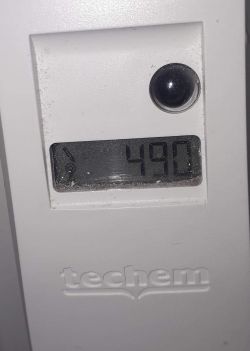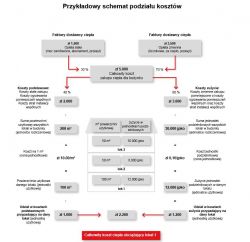In short, the cost allocator breaks down the heating costs.
A heat energy meter is installed for the whole house, which shows the consumption in kWh (or GJ). This value is countable, i.e. 1000 kWh = 6000 PLN
In the house, for example, there are 4 apartments and each of them has 1 heater. In order to be able to divide the cost of the main meter honestly, i.e. like a heater heater (household members have a different sense of heat comfort, one prefer 23 * C, the other 19 * C), a cost sharing system, i.e. a divider, was invented. This system allows you to roughly estimate how much the tenant should pay for his radiator based on the indications of the main meter. The system takes into account the programming of the radiator, ie. Depending on its power (size, type), loading the units during heating is faster or slower.
Of course, the allocation companies that deal with the settlement, depending on the arrangements with the administration, introduce correction factors for apartments in the gables, on the ground floor or in the attic (the apartments need more heat than the middle ones). All this to be fair ... I have not mentioned the so-called fixed costs resulting from losses in heat transfer or heating common parts of the building, e.g. staircases.
To sum up, you need to heat at home, but remember:
- the thermostatic head (knob) on the radiator is used to set the room temperature - lower it if you have too much heat
- when you open the window, turn the heater in the head so that it does not heat it up, sensing the cold, because these are the biggest losses
- you are leaving for a long period of time (are you not at home for a few hours) - reduce the temperature in the rooms, i.e. turn 1-2 scales on the head - but do not turn the radiator to the maximum because you will cool the room too much and it will have to heat up longer to reach the desired temperature for your comfort.
On completion, the 4 tenants used up 2,300 units in total
wherein
1 tenant and its heater 700
2 tenant and his heater 400
3 tenant and his heater 800
3 tenant and his heater 400
6,000 PLN / 2,300 units gives the price of PLN 2.60 per 1 unit
Multiplying the consumption units by the price shows how much the tenant has to pay for heating.
One should also remember about the correction factors, but these may already be programmed in the allocator - it all depends on the settlement company.
greetings







